G-Rated 'Hansel and Gretel' is a Crowd-Pleaser
/By Elsa Tranter
11/20/2019
Photo credit: Cory Weaver / San Francisco Opera
Those of us who like our operas tragic and dramatic were a little disappointed in the San Francisco Opera’s holiday production (started already, in late November) of Hansel and Gretel, complete with holly and tinsel and a gingerbread house in the lobby. But the children were there in great numbers on this, the first of three matinees (November 17).
Engelbert Humperdinck took the classic Grimms fairy tale and turned it into an opera; it had its premiere in 1893, in Weimar Germany, conducted by twenty-nine-year old Richard Strauss, who gave the composer high praise for his new work. Hansel and Gretel was the first complete opera to be broadcast on the radio (from London in 1923) and the first radio broadcast from the Metropolitan Opera in New York on Christmas day 1931 (a tradition that continues to this day).
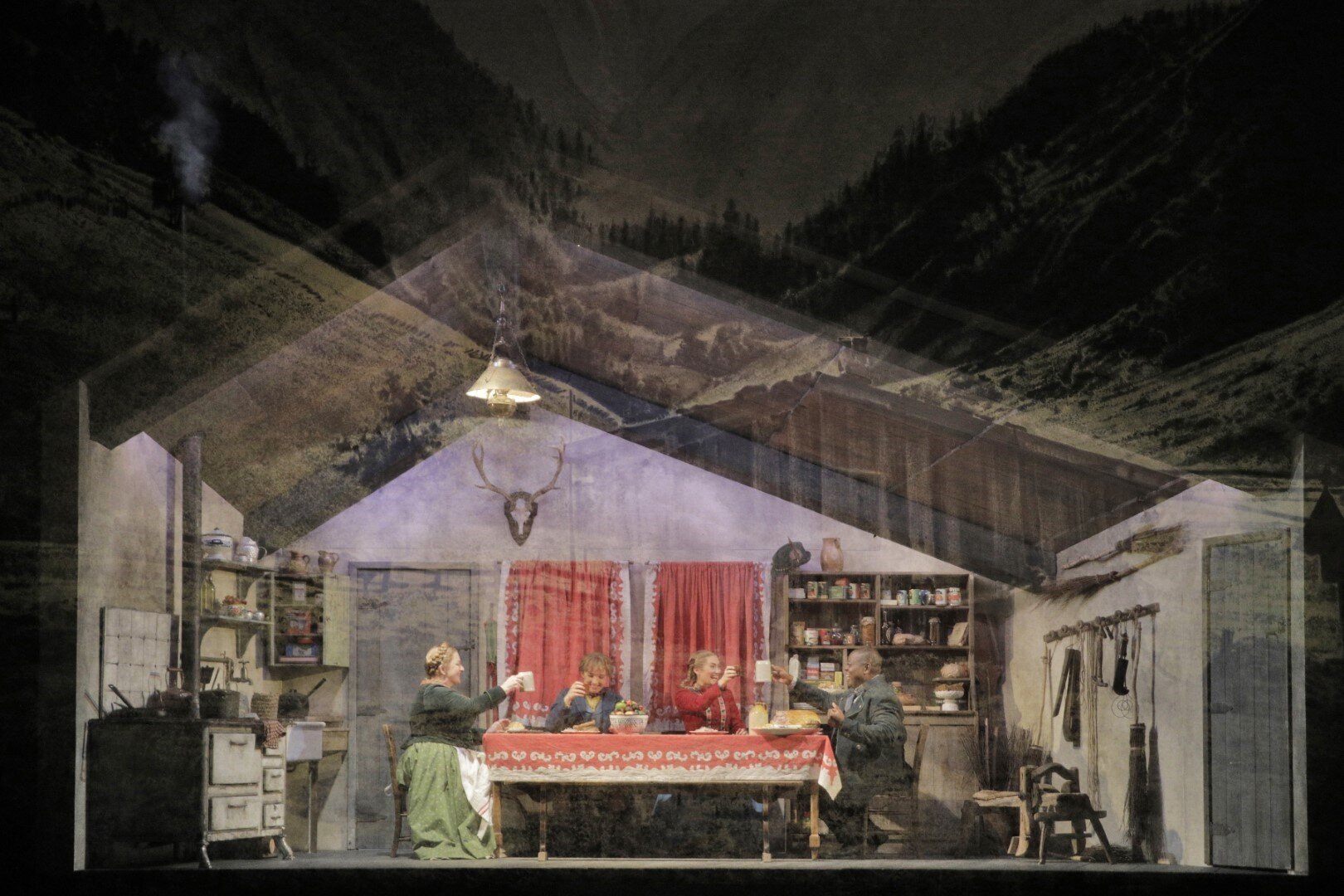
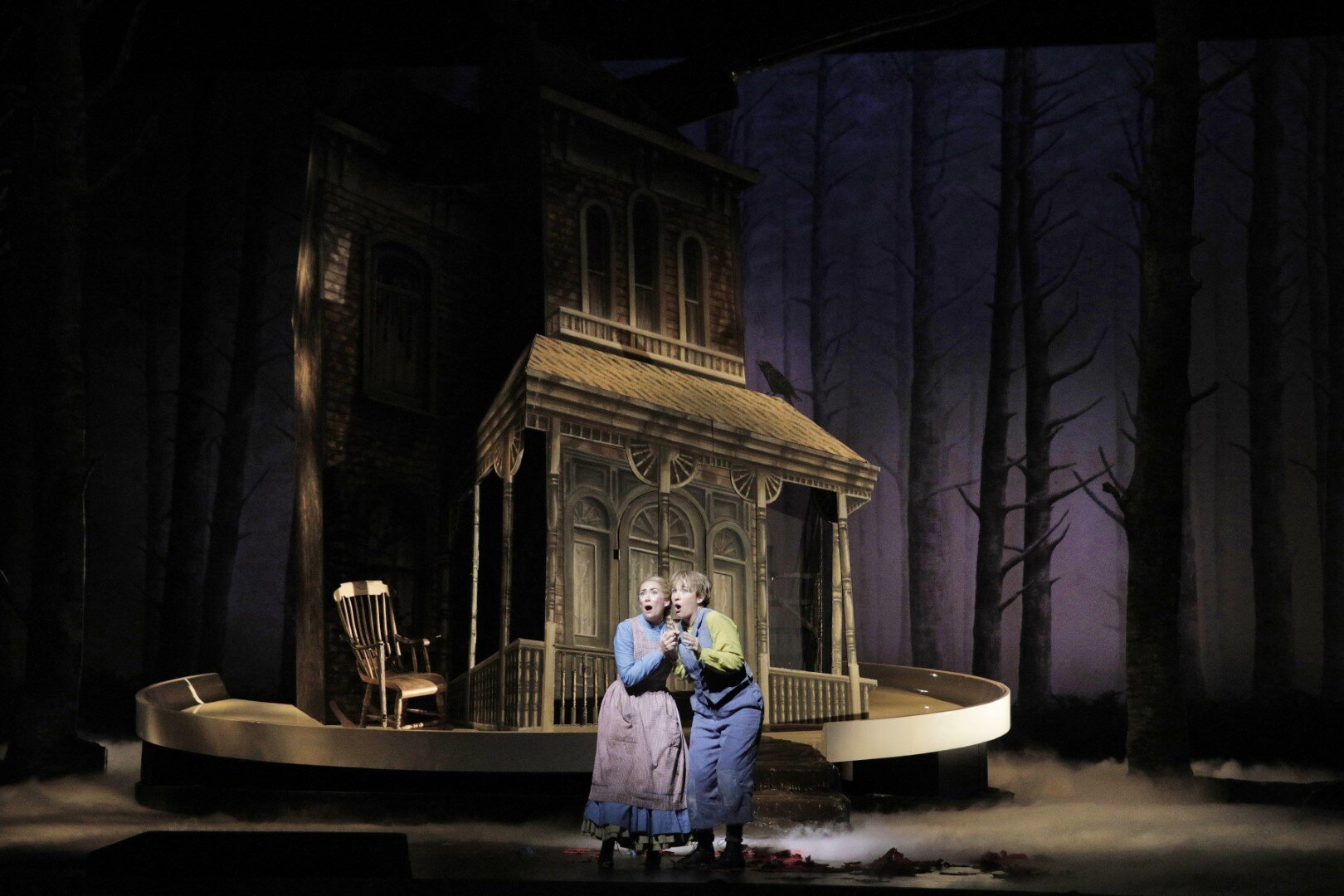

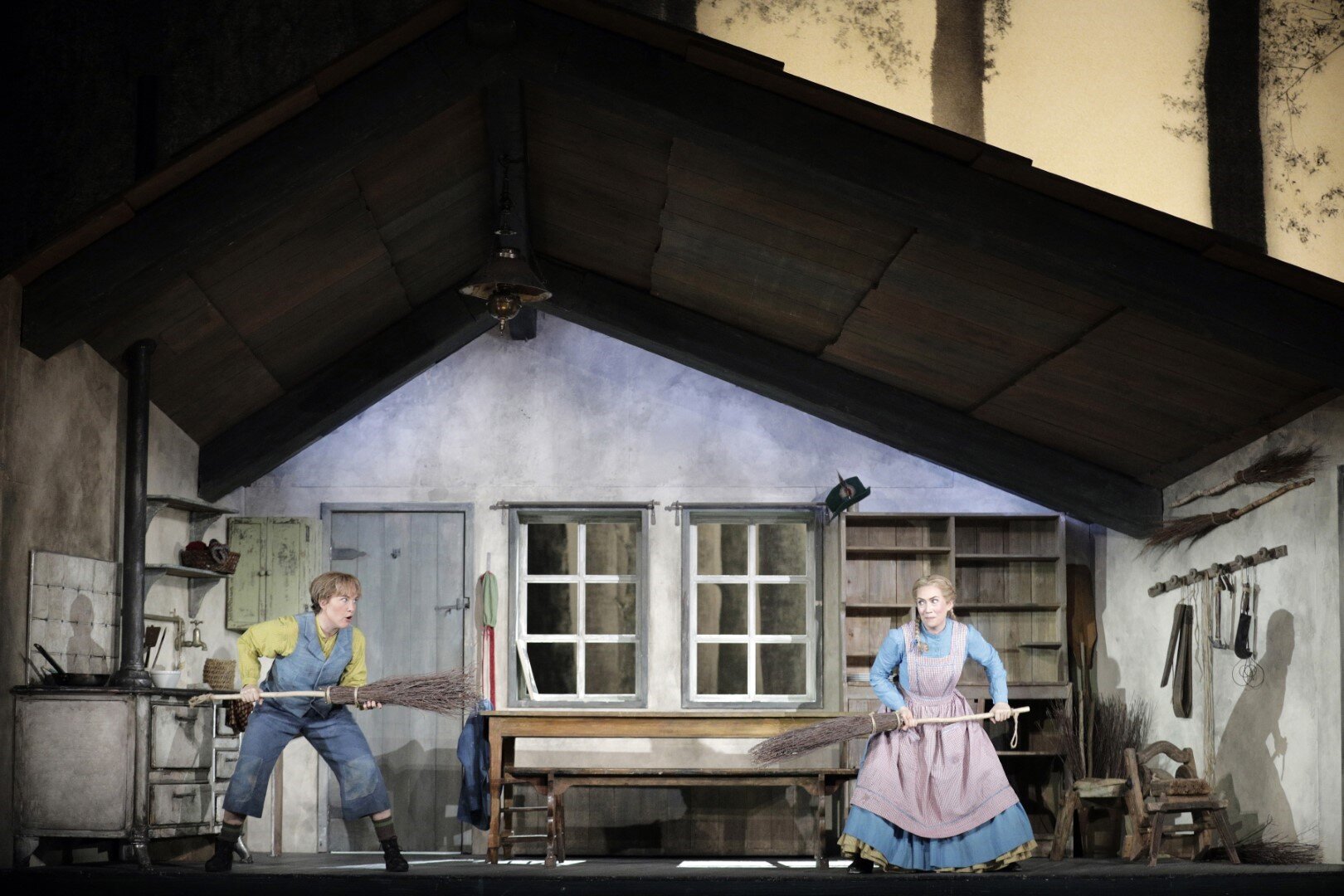
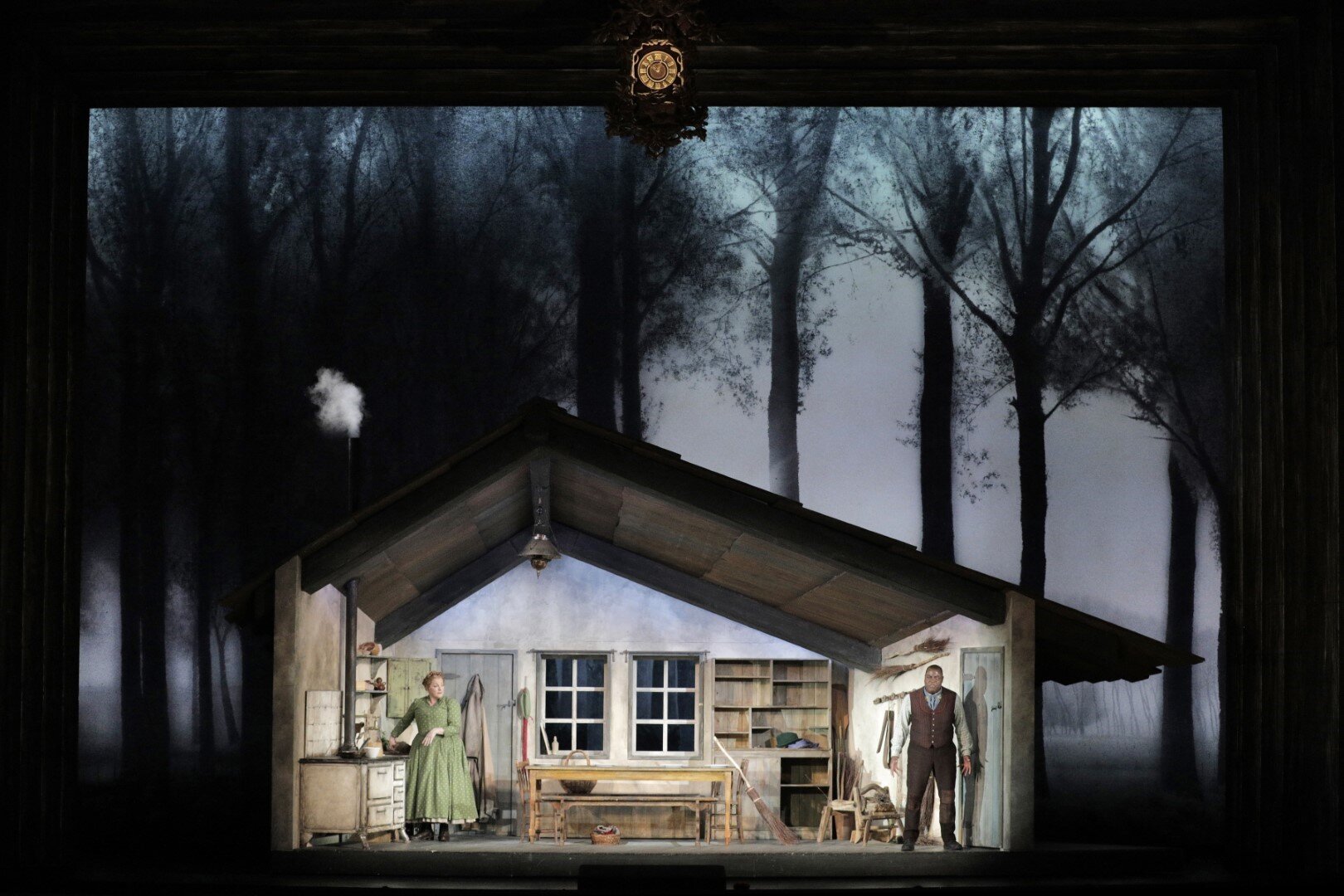
The dark (and grim!) story has been softened considerably with all the hard edges removed; some of the modification is in the libretto (written by Humperdinck’s sister Adelheid Wette) and some I suspect is in the English translation of the original German (we heard it in English with supertitles as well). As an example, the children are sent out to pick strawberries in the opera and not banished because there’s no food to eat as it is in the original. The witch seems more comic than cruel, and the parents seem much more loving (though strict) than in the story. Also, during the Dream Pantomime various characters from other Grimm’s fairy tales wander around on the set, finally making a lovely tableau at the end, to remind us that this is just a fairy tale. (That also served to keep one paying attention during the orchestral interlude.)
Humperdinck was a devotee of and an assistant to the great Richard Wagner and the music reflects this. It calls for quite a big orchestra and the lush music filled the house, combining Wagnerian style and German folk tunes. The title characters were sung by mezzo-soprano Sasha Cooke as Hansel and soprano Heidi Stober as Gretel. Ms. Cooke was particularly effective in her boyishness and Ms. Stober was well matched as the sister. Their voices were clear and clarion and blended well together and their playfulness was charming. Bass-baritone Alfred Walker was Peter the father and soprano Mary Evelyn Hangley made her S.F. Opera debut as Gertrude the mother (a last minute substitute). They were both up to the challenge and were suitably severe when necessary. The witch, not so wicked at all, was sung by the delightful Robert Brubaker in full drag (which he stripped down from at the end of the opera—no secrets here). The smaller roles of the Sandman and the Dew Fairy (one to sing the children to sleep and one to wake them up) were sung crisply and clearly by mezzo-soprano Ashley Dixon and soprano Natalie Image. Except for Canadian Ms. Image, all the principals are from the U.S.
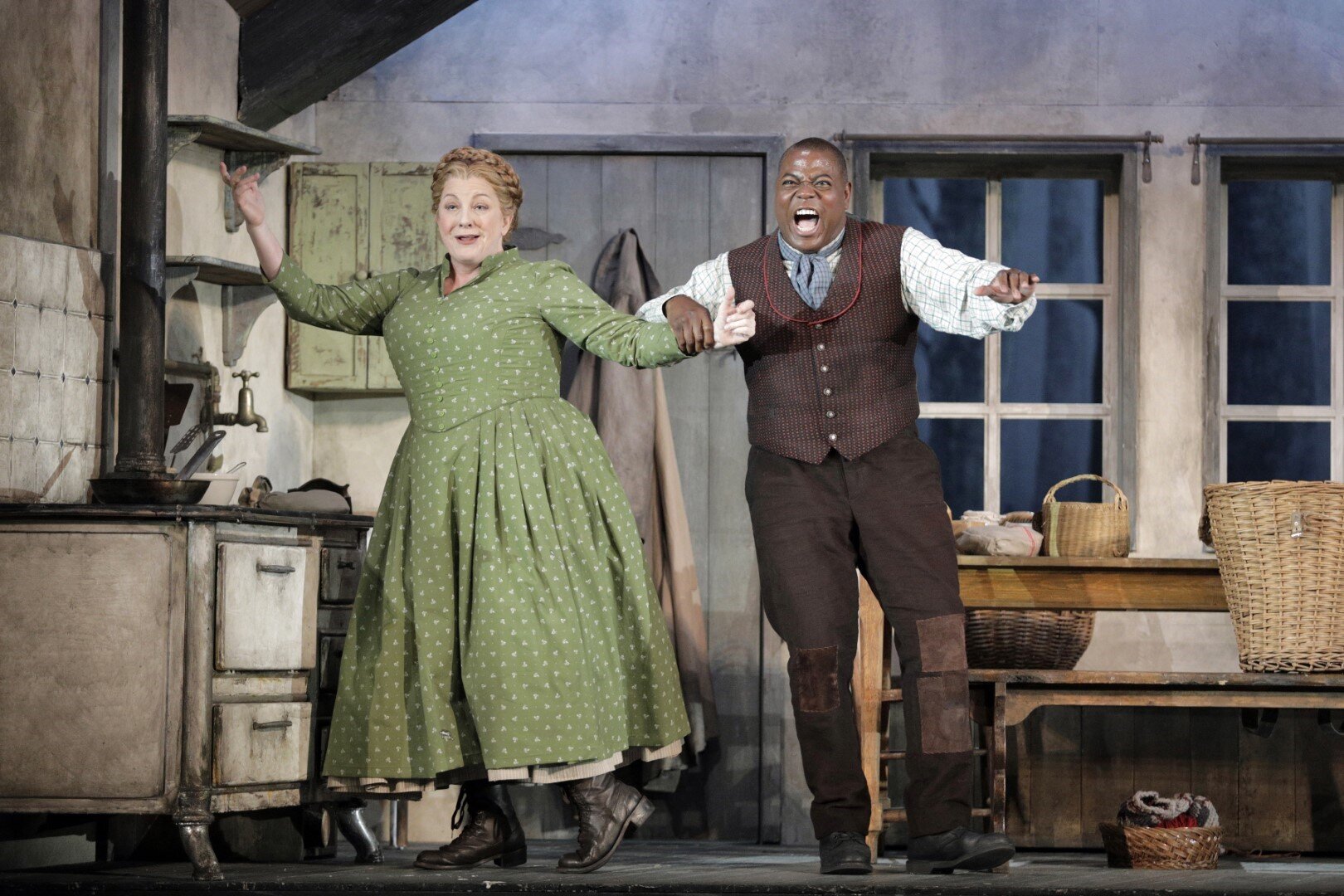
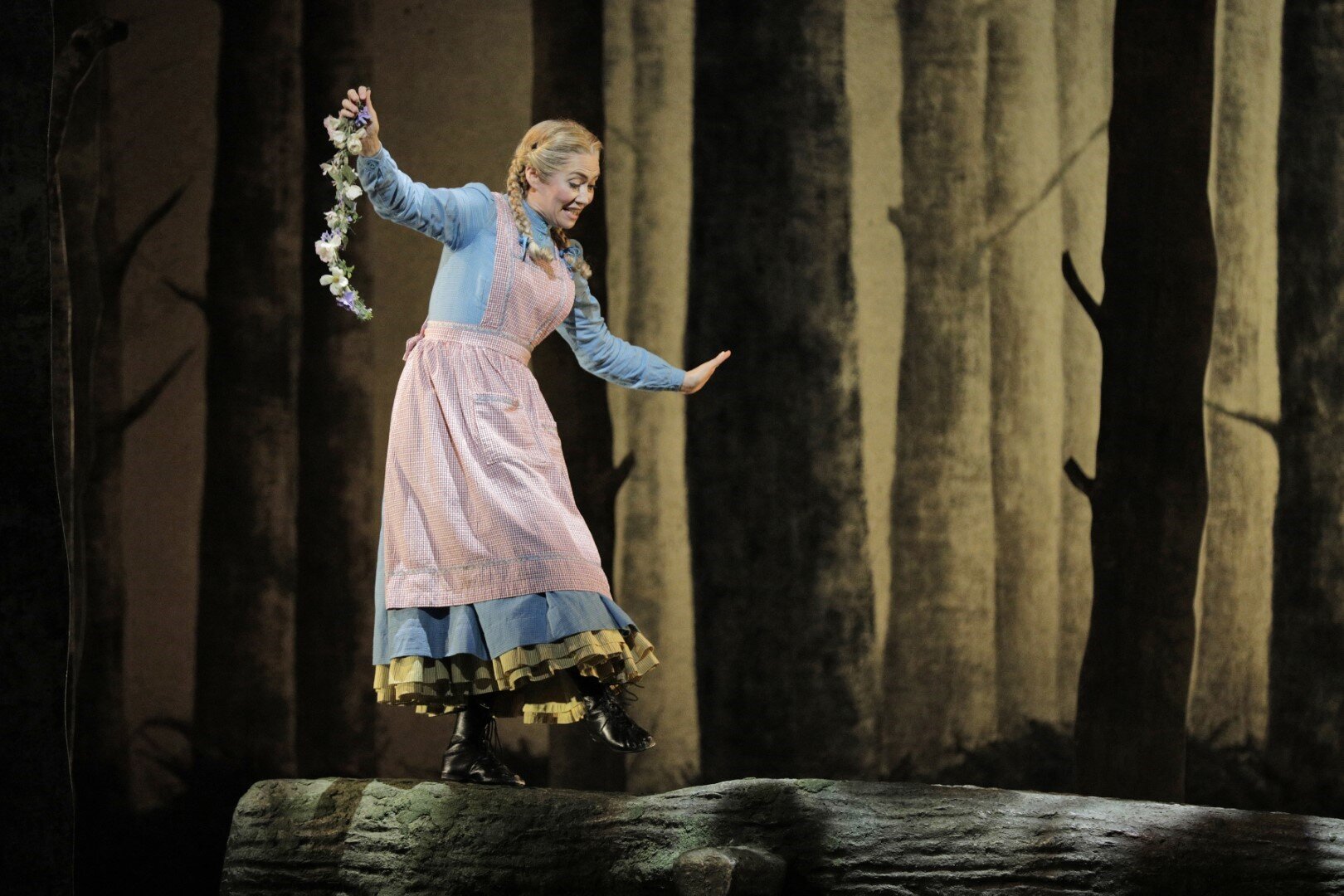
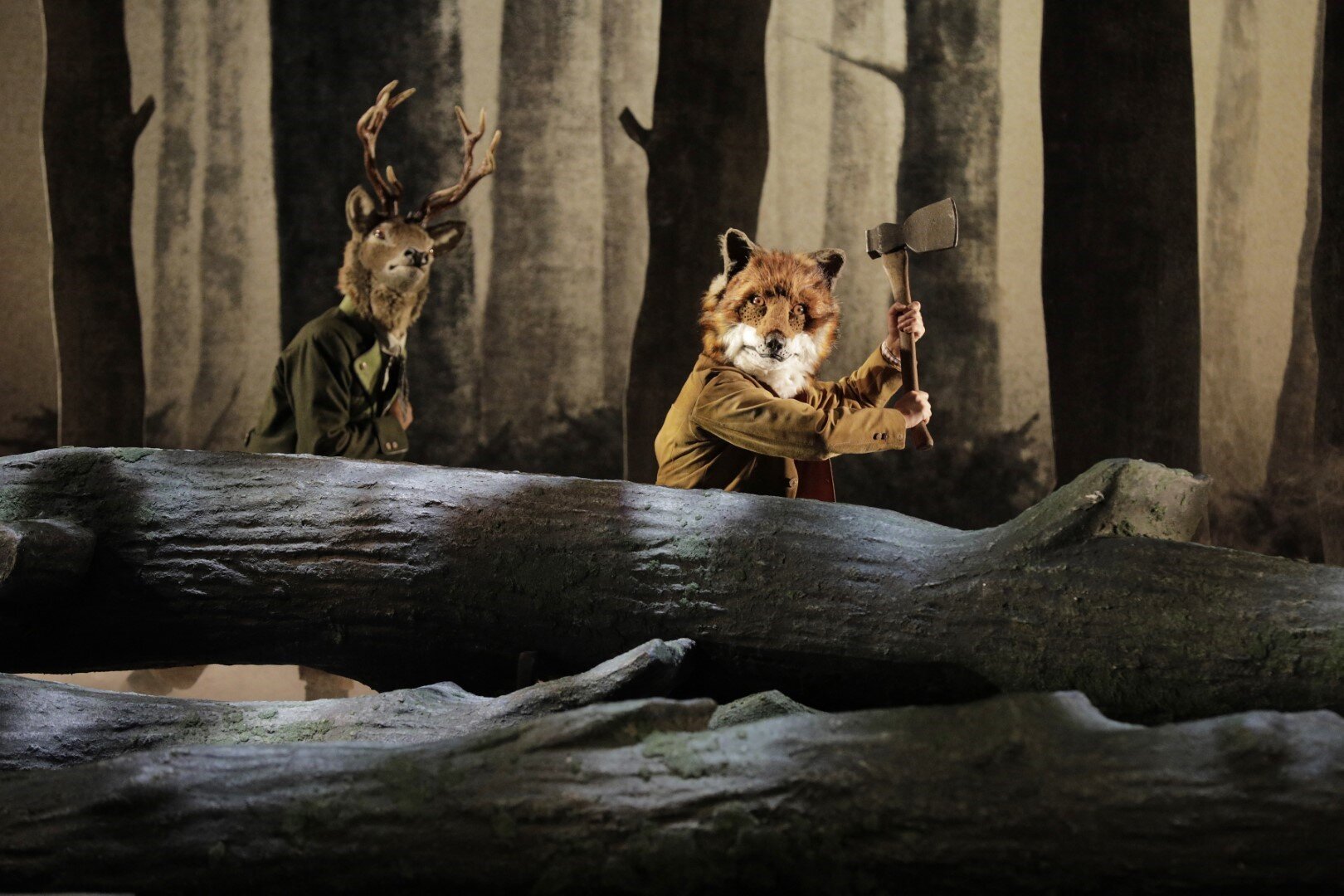
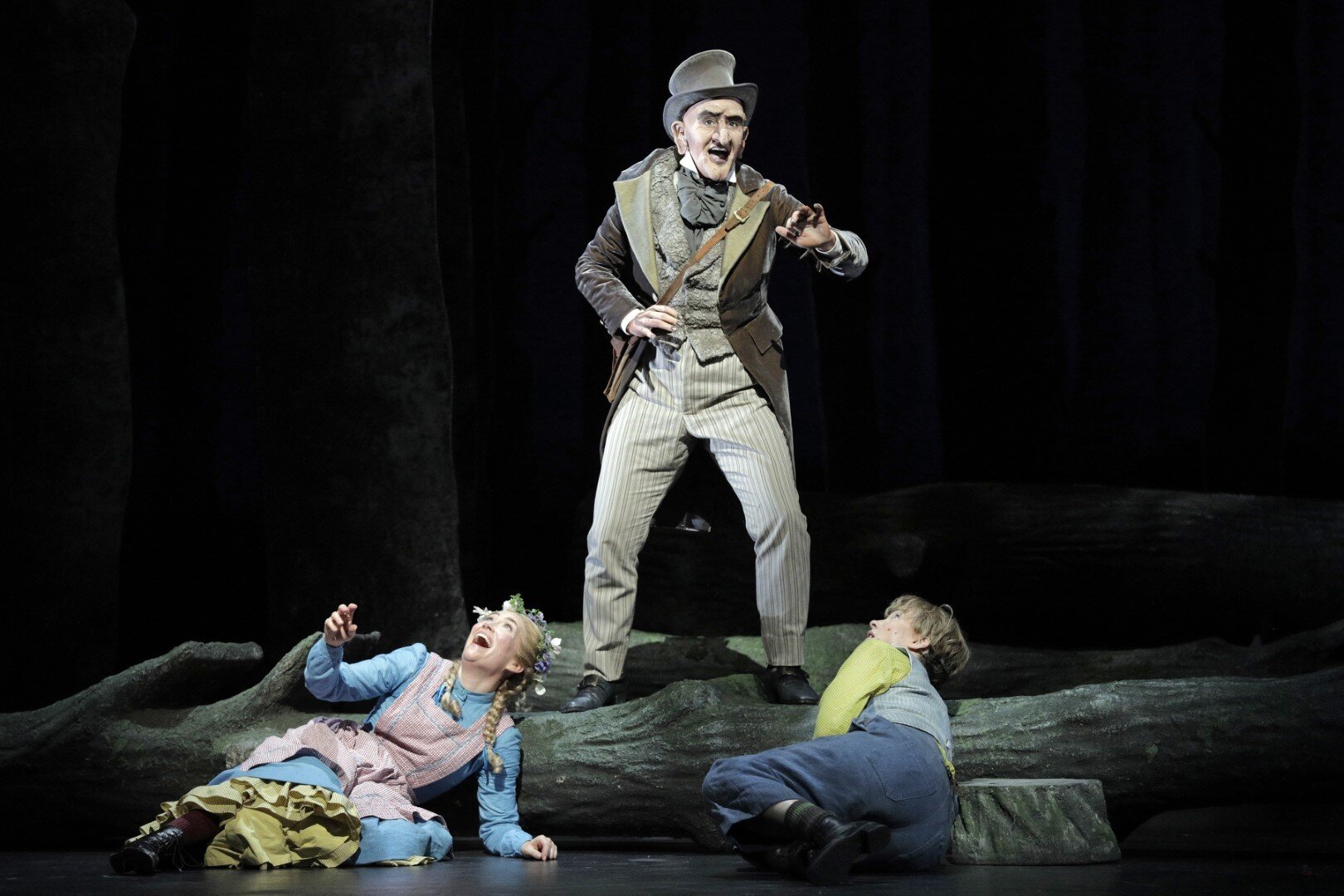
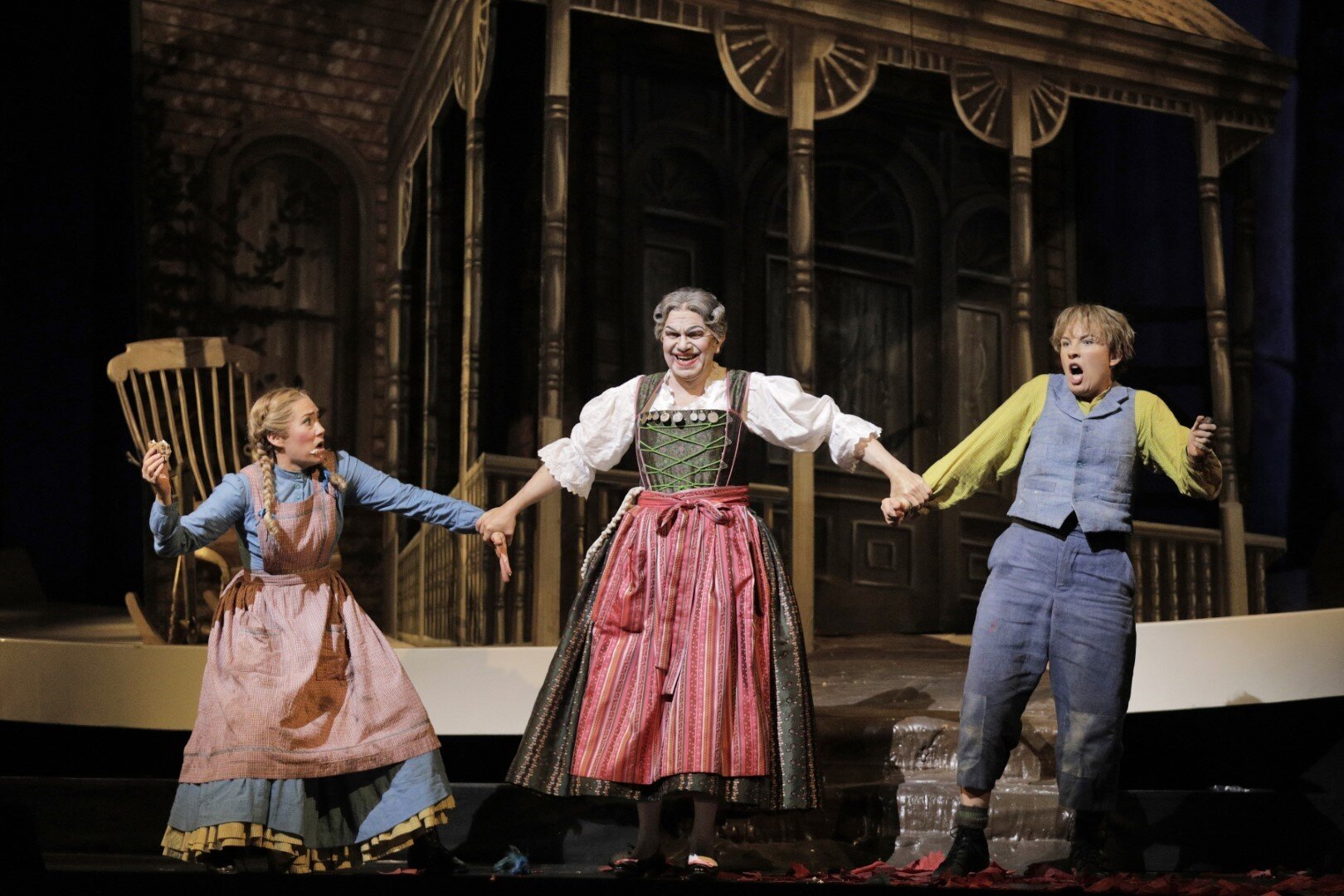


The sets were imaginative and creative—with some bells and whistles to keep the attention of the young ones. The witch’s house featured an off-kilter facade with a cherry on the top and a large knife through the top. It also had a freshly-made chocolate bannister strut, which the children chomped through while singing their hearts out. It made me hungry just to look at it. The costumes were traditional and appropriate. The stage director/production designer was Antony McDonald, who inaugurated the work at the Royal Opera, Covent Garden.
Christopher Franklin conducted the San Francisco Opera Orchestra and was joined at the end by children from the San Francisco boys and girls choruses (portraying the returned-to-life children who were captured by the witch in earlier times). So all’s well that ends well. And getting the next generation to sit through opera and maybe to return as adults is certainly a good idea, though I kept thinking of Maurice Sendak and Bruno Bettleheim who argued for articulating the darkness of childhood and the conquering of fears. It was a satisfying and a ‘feel good’ afternoon musically, and short as well—2 hours 12 minutes running time.
Six performances remain: November 21, 23, December 3, and 7 at 7:30; and November 30 and December 1 at 2:00. There are various children’s activities in conjunction with the opera, including a gingerbread scavenger hunt!
Elsa Tranter is a Bostonian who has lived in Berkeley for over 40 years and has been an opera goer for most of those years. She worked as a graduate student adviser at UC Berkeley and still attends Cal Performances regularly. Her favorite composer is Wagner and her favorite opera is Tristan und Isolde.


